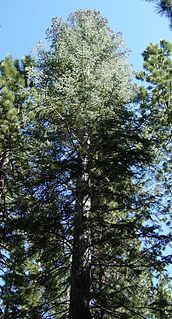| Choristoneura carnana | |
|---|---|
| Scientific classification | |
| Kingdom: | Animalia |
| Phylum: | Arthropoda |
| Class: | Insecta |
| Order: | Lepidoptera |
| Family: | Tortricidae |
| Genus: | Choristoneura |
| Species: | C. carnana |
| Binomial name | |
| Choristoneura carnana | |
| Synonyms | |
| |
Choristoneura carnana is a species of moth of the family Tortricidae first described by William Barnes and August Busck in 1920. It is found in the United States, where it has been recorded from California and Colorado. [2]

Moths are a polyphyletic group of insects that includes all members of the order Lepidoptera that are not butterflies, with moths making up the vast majority of the order. There are thought to be approximately 160,000 species of moth, many of which have yet to be described. Most species of moth are nocturnal, but there are also crepuscular and diurnal species.

The Tortricidae are a family of moths, commonly known as tortrix moths or leafroller moths, in the order Lepidoptera. This large family has over 10,350 species described, and is the sole member of the superfamily Tortricoidea, although the genus Heliocosma is sometimes placed within this superfamily. Many of these are economically important pests. Olethreutidae is a junior synonym. The typical resting posture is with the wings folded back, producing a rather rounded profile.
A species description is a formal description of a newly discovered species, usually in the form of a scientific paper. Its purpose is to give a clear description of a new species of organism and explain how it differs from species which have been described previously or are related. The species description often contains photographs or other illustrations of the type material and states in which museums it has been deposited. The publication in which the species is described gives the new species a formal scientific name. Some 1.9 million species have been identified and described, out of some 8.7 million that may actually exist. Millions more have become extinct.
The wingspan is 20–21 mm. Adults have been recorded on wing from May to September.

The wingspan of a bird or an airplane is the distance from one wingtip to the other wingtip. For example, the Boeing 777-200 has a wingspan of 60.93 metres, and a wandering albatross caught in 1965 had a wingspan of 3.63 metres, the official record for a living bird. The term wingspan, more technically extent, is also used for other winged animals such as pterosaurs, bats, insects, etc., and other aircraft such as ornithopters. In humans, the term wingspan also refers to the arm span, which is distance between the length from one end of an individual's arms to the other when raised parallel to the ground at shoulder height at a 90º angle. Former professional basketball player Manute Bol stands at 7 ft 7 in (2.31 m) and owns one of the largest wingspans at 8 ft 6 in (2.59 m).
The larvae feed on Abies concolor , Pseudotsuga macrocarpa , Pseudotsuga menziesii and Pseudotsuga macrocarpa . [3]

Abies concolor, the white fir, is a coniferous tree in the pine family Pinaceae. This tree is native to the mountains of western North America from the southern Cascade range in Oregon, south throughout California and into the Sierra de San Pedro Mártir in northern Baja California; west through parts of southern Idaho, to Wyoming; and south throughout the Colorado Plateau and southern Rocky Mountains in Utah and Colorado, and into the isolated mountain ranges of southern Arizona, New Mexico and northern Mexico. White fir live over 300-years and naturally occur at an elevation between 900–3,400 m (2,950–11,200 ft).

Pseudotsuga macrocarpa, commonly called the bigcone spruce or bigcone Douglas-fir, is an evergreen conifer native to the mountains of southern California, It is notable for having the largest cones in the genus Pseudotsuga, hence the name.



